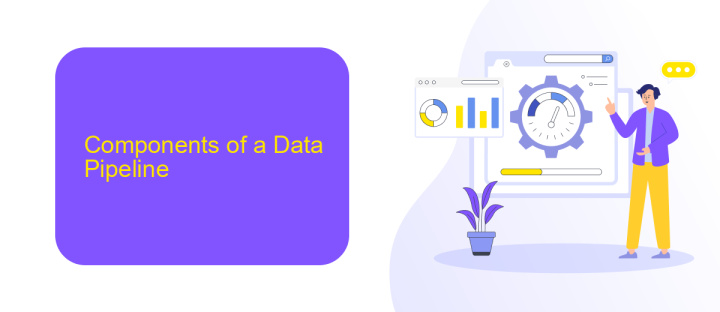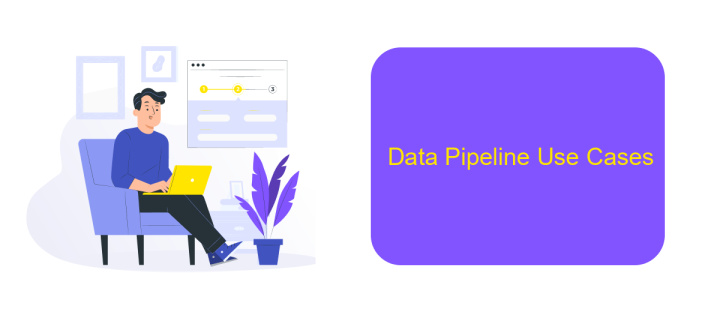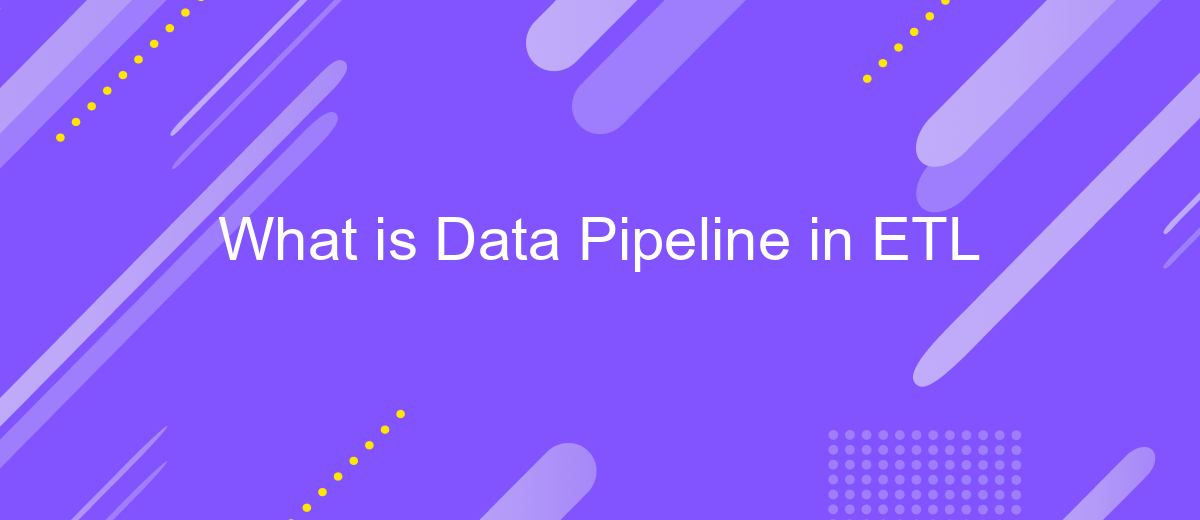What is Data Pipeline in ETL
A data pipeline in ETL (Extract, Transform, Load) is a crucial component that automates the movement and transformation of data from various sources to a destination system. It ensures data is collected, processed, and made available for analysis in a seamless and efficient manner. Understanding data pipelines is essential for optimizing data workflows and enabling data-driven decision-making.
What is Data Pipeline?
A data pipeline is a series of processes that move data from one system to another. It involves extracting data from various sources, transforming it into a suitable format, and loading it into a destination system for analysis or storage. Data pipelines are essential for managing large volumes of data and ensuring its accuracy and consistency.
- Extraction: Collecting data from diverse sources such as databases, APIs, and flat files.
- Transformation: Cleaning, filtering, and structuring data to meet specific requirements.
- Loading: Inserting the transformed data into a target system like a data warehouse or data lake.
Effective data pipelines are crucial for businesses to make data-driven decisions. Tools like ApiX-Drive can simplify the integration process by automating data extraction and transformation tasks, making it easier for organizations to manage their data flows. By using such services, companies can focus on analyzing data rather than spending time on manual data handling tasks.
Components of a Data Pipeline

A data pipeline consists of several crucial components that work together to ensure the smooth flow and transformation of data from source to destination. The first component is data ingestion, which involves collecting data from various sources, such as databases, APIs, and flat files. This step ensures that data is accurately and efficiently gathered for further processing. Tools like ApiX-Drive can be particularly useful here, as they facilitate seamless integration and automation of data collection from multiple platforms.
The next component is data processing, where the ingested data is cleaned, transformed, and enriched to meet the requirements of the target system. This step often involves tasks such as filtering, sorting, and aggregating data. Following data processing, the data is then loaded into a storage system or data warehouse. The final component is data monitoring and management, which ensures data quality, integrity, and security throughout the pipeline. Effective monitoring tools and practices are essential to maintain the reliability and performance of the entire data pipeline.
Types of Data Pipelines

Data pipelines play a crucial role in the ETL process, enabling seamless data flow from various sources to destinations. Understanding the different types of data pipelines can help organizations choose the right approach for their data integration needs.
- Batch Processing Pipelines: These pipelines collect data over a period and process it in bulk. They are suitable for scenarios where real-time processing is not critical, such as end-of-day reporting.
- Real-Time Processing Pipelines: Designed for instantaneous data processing, these pipelines handle data as it arrives. They are essential for applications requiring immediate insights, like fraud detection or live analytics.
- Streaming Pipelines: Similar to real-time pipelines, streaming pipelines process continuous data streams. They are ideal for use cases involving constant data flow, such as monitoring IoT devices.
- Hybrid Pipelines: Combining batch and real-time processing, hybrid pipelines offer flexibility for various data integration needs. They are useful for organizations that need both historical and real-time data insights.
To streamline the setup and management of these data pipelines, services like ApiX-Drive can be invaluable. ApiX-Drive offers user-friendly tools to automate data integration across multiple platforms, ensuring efficient and reliable data flow. By leveraging such services, organizations can focus on deriving value from their data rather than getting bogged down in the complexities of pipeline management.
Data Pipeline Use Cases

Data pipelines are essential for efficiently managing and transforming data from various sources into valuable insights. They streamline the process of data collection, processing, and analysis, making it easier for organizations to make data-driven decisions.
One common use case for data pipelines is in the field of business intelligence, where they help in aggregating data from multiple sources to provide comprehensive reports and dashboards. This enables companies to monitor key performance indicators and identify trends in real-time.
- Data Integration: Combining data from disparate sources into a unified view.
- Real-Time Analytics: Processing data in real-time to provide immediate insights.
- Machine Learning: Preparing and feeding data into machine learning models for predictive analytics.
- Data Warehousing: Storing large volumes of data for efficient querying and analysis.
Services like ApiX-Drive facilitate the setup of data pipelines by offering seamless integrations with various applications and platforms. This allows businesses to automate data workflows, reducing manual efforts and minimizing errors. By leveraging such services, organizations can ensure their data pipelines are robust, scalable, and efficient.
- Automate the work of an online store or landing
- Empower through integration
- Don't spend money on programmers and integrators
- Save time by automating routine tasks
Benefits of Using Data Pipelines
Data pipelines offer numerous benefits that streamline the ETL (Extract, Transform, Load) process, making it more efficient and reliable. One of the primary advantages is automation, which reduces the need for manual intervention and minimizes the risk of human error. Automated pipelines ensure consistent data flow, enabling real-time data processing and quicker decision-making. They also enhance scalability, allowing businesses to handle increasing volumes of data without compromising performance.
Another significant benefit is the seamless integration of various data sources. Services like ApiX-Drive facilitate easy and efficient integration, allowing data from multiple platforms to be consolidated into a single pipeline. This not only saves time but also ensures data consistency and accuracy. Additionally, data pipelines improve data quality by incorporating validation and cleansing mechanisms, ensuring that only accurate and relevant data is loaded into the target systems. Overall, data pipelines enhance the reliability, efficiency, and scalability of the ETL process, empowering businesses to make data-driven decisions with confidence.
FAQ
What is a data pipeline in ETL?
Why is a data pipeline important in ETL?
How can I automate data pipelines in ETL?
What are the key components of a data pipeline in ETL?
How do I handle errors in a data pipeline?
Time is the most valuable resource in today's business realities. By eliminating the routine from work processes, you will get more opportunities to implement the most daring plans and ideas. Choose – you can continue to waste time, money and nerves on inefficient solutions, or you can use ApiX-Drive, automating work processes and achieving results with minimal investment of money, effort and human resources.


